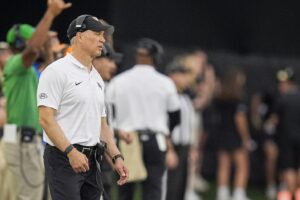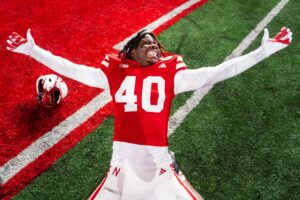The one certainty about the NIL rules that started two weeks ago for college sports was that there would be rampant uncertainty. Most of the country’s universities, and certainly the NCAA, make it up as they go along. But there is one thing they have all seemed to miss. We are watching as the schools/NCAA blow past international student-athletes with the NIL.
Schools/NCAA Blow Past International Student-Athletes
They Had Their Chance
On August 8, 2014, a federal court judge ruled in favor of former UCLA basketball player Ed O’Bannon in what turned out to be the landmark case for Name/Image/Likeness issues. By August 9 of that year, the NCAA had legitimate cause to begin working on a national plan for NIL rights for athletes. Instead, NCAA president Mark Emmert and his leadership councils continued to hope there would never be a compensation issue for athletes. They ignored the obvious.
Three years ago, state legislatures started creating their own rules to govern over the colleges and universities in their respective state. The real point was to try to push the NCAA into movement. But anyone who has covered college sports will tell you the NCAA will never be pushed into doing what is right.
Wheels In Motion
As of today, there are 24 states that have NIL legislation that has already either begun or will do so within the next 12 months. The rules are similar from state to state but not identical, and thus the groundwork for recruiting chaos abounds. For the schools that exist in a state with no NIL legislation, the NCAA has offered some remedial level of guidance that the universities are free to follow…or not. Everyone is pretty much left to make it up on a day-by-day basis. There are hundreds of deals signed with players already. There are a couple that have violated the NCAA “rules” and have to be amended. And there are those being left as is. None of the guidance in state legislations or the NCAA addresses the laws that restrict the finances of international athletes.
There are approximately 460,000 student athletes at all levels of NCAA sports. About 4%, or approximately 20,000, are international students. We have all seen the football punter, the track athlete, the soccer player who learned their craft in their home country before moving to the United States for school.
Visa Rules In Place
But it is not as if they just show up in the US with their bags, go to campus, move into the dorms, and start going to classes. International students/athletes are here with F1 visas. The intent of an F1 visa is to allow a person who is not a US citizen or US national, to study in the United States. They are issued by U.S. Embassies and Consulates outside the U.S., and visas cannot be issued inside the U.S. Most importantly for the athletes, the visa only permits some very specific types of work while they are enrolled in the US. Most of that permitted work is not to be found in anyone’s NIL guidance.
While the rest of the student athletes have entered into an unbridled frontier of opportunities, international students who are on F1 visas are bound, by the visa regulations, to have nothing more than what is called a “passive income.” That passive income is monitored by both the issuer of the visa, which can revoke it at any time, and by the IRS.
We reviewed the IRS guidelines on “passive income.” It is loosely defined as earnings from a source other than an employer or contractor. The employer, in the literal sense here, would be the university. Since ALL NIL rules prohibit the money being funneled through the school, there is no conflict there. But a contractor is exactly what the vendors are that are paying the student-athletes to endorse their products.
“Passive” Income Only
The IRS gives the following examples of passive income; “rental property or a business in which one does not actively participate, such as being paid book royalties or stock dividends.” None of those seems very likely for a college athlete, who is going to classes and training the rest of the day. The guidance gives 14 specific categories of what an F1 visa holder can make money from. They include categories like having advertisers pay to put their ads on your car; rent out your home on a short-term basis; invest in a high-yield CD or savings account; engage in Real Estate Investment Trusts, (REITS).
There are two items that out of the list of 14 that could be viable for an international student-athlete. They are allowed to do what is called affiliate marketing. They would own a social media site and a sponsor would pay to advertise on the athlete’s site. Not exactly what the new freedom was designed to be. The other would be to create their own app and charge people to use it. Again, neither the intent or the spirit of the new NIL freedoms.
In short, everyone rushed to help their school look good and progressive. But they skipped over some of their own student athletes.
NCAA Has Nothing To Add
We contacted the NCAA in writing to inquire as to their guidance regarding international student-athletes. In the written policy issued on June 30th, there is not one mention about how to make sure international student-athletes get taken care of. We got an unsigned response from an NCAA email address. The response said, “All guidelines from the NCAA as they pertain to states that do not have signed legislation, have been released and stand as is.” That pretty much fits with its handling of the entire topic.
From there we reached out to NCAA compliance officers at several universities across the country. Three agreed to talk to us on the condition we not use their name or their school’s name. They feared that if they gave us wrong information it would shine a light on their school for potential NIL violations. There is too much unknown right now.
What’s A School To Do?
Compliance #1 was from a Conference-USA school. Compliance #2 was from a Big 10 school. The third one, Compliance #3 was from a Division II mid-Atlantic region school.
We did get a response from a west coast school, albeit not from the compliance officer. The athletic department said we should get our answers from the NCAA. Sure. Did you read their response above? But that was as deep as they were willing to get into the subject.
Compliance officer #1 said they reviewed their state’s NIL legislation as it was being passed through the process. They did not see anything regarding international student athletes and brought it the attention of their school’s athletic director. “My AD went to the school administration who said they would take it up with their contacts in the state legislature.” There is no verification regarding that conversation. The compliance office at the school has done presentations with student athletes about how to handle the NIL potential. But he said he is having one on one meetings with international student-athletes.
The school has, “About two dozen,” international student-athletes the compliance officer told us. “We are having conversations about what they might want to do with the new NIL opportunities. If they think they have significant financial opportunities, we are suggesting that instead of an F1 visa, they think about applying for a work visa. We cannot mandate it. But we can suggest it.”
No Clear Answers
Visa guidelines seem to suggest that people here on a work visa can go to school as well. There are restrictions on the work they do, but they may not be as stringent as the F1 visas. But so much of this is being left to interpretation.
We asked compliance officer #2 about the idea of moving away from student visas and doing work visas instead. Her concern was the time it takes to get through the visa process at any level. Making an abrupt change from a student visa to a work visa application, “Could cost the student athlete valuable time when it comes to taking advantage of the NIL opportunities.” She said she looked at this as a transitional period. The school would work with the international student-athletes under the current student visa status, while they search for better options. She acknowledged the rules appear to be limiting, but said it was better than being left out completely.
Compliance officer #3 works with a much smaller “client base,” because of the size of the school. He said he only has, “a handful of athletes” for whom this issue applies. The NCAA guidance is applicable for athletics at all levels and his state has pending NIL legislation. He is hopeful that the mistakes and oversites are a learning lesson for others. “I am hoping we can get some changes made to cover the questions and issues others are having before it gets signed.”
Last year was haphazard in college athletics because of a virus that spread in largely unpredictable manners. This athletic season promises to be just as chaotic but for reasons that could have been managed with a reasonable amount of forethought.






